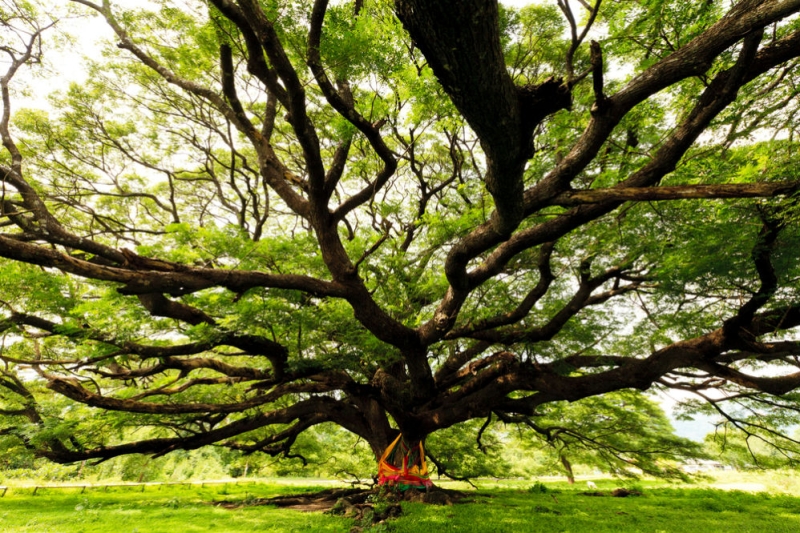
We are used to being touched by furry animals and being afraid of poisonous monsters, admiring the unusual creatures of certain regions, but for some reason we often forget about the most ancient living creatures – trees. Yes, they don’t have legs or eyes, but they tirelessly give us oxygen and live much longer than any animal. Their shapes and sizes can also stun you, the calm beauty of their curves can make you fall in love with yourself, and their age will make you think about how short a person’s life is. Today we will talk about some amazing trees that you just want to hug and quietly stand next to.
Sequoias
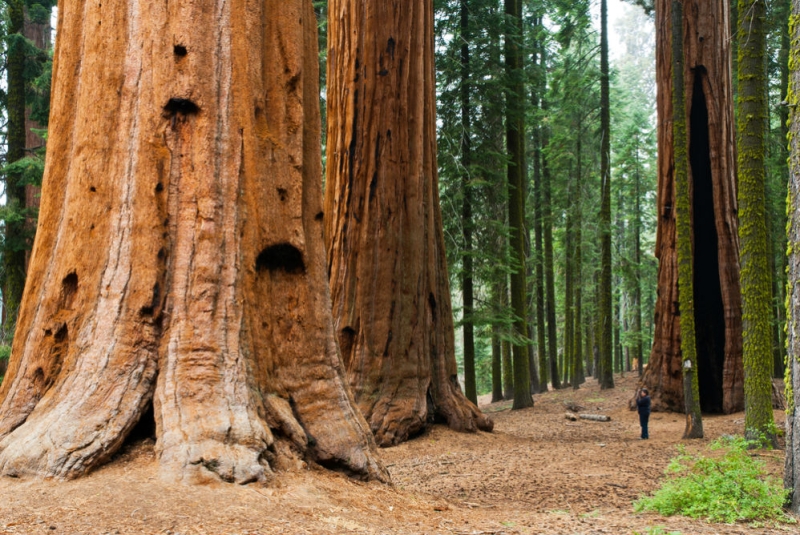
Many people know that the tallest trees on earth grow in California – sequoias, long-livers, whose age reaches 2000 years. When you look up at such a giant, respect and awe are mixed in your soul, so it is not surprising that the largest and oldest trees have names. The record holder for height is called “Hyperion”, his height is 115.6 meters. “Titan Del Norte” is a little lower, only 93 meters, but it has grown in width, and is considered the most voluminous tree among the sequoias. And here’s another interesting fact that will make you look at trees differently. Among the redwood trees there are albino trees; due to genetic mutations, their needles are white rather than green. Albinos are not capable of photosynthesis, but they intertwine their roots with neighboring redwoods, and they share nutrients, thus keeping them alive! In two US national parks, Henry Cowell Redwoods State Park and Humboldt Redwoods State Park, there are a total of about 60 albino redwoods, but their exact location has not been disclosed.
Wisteria
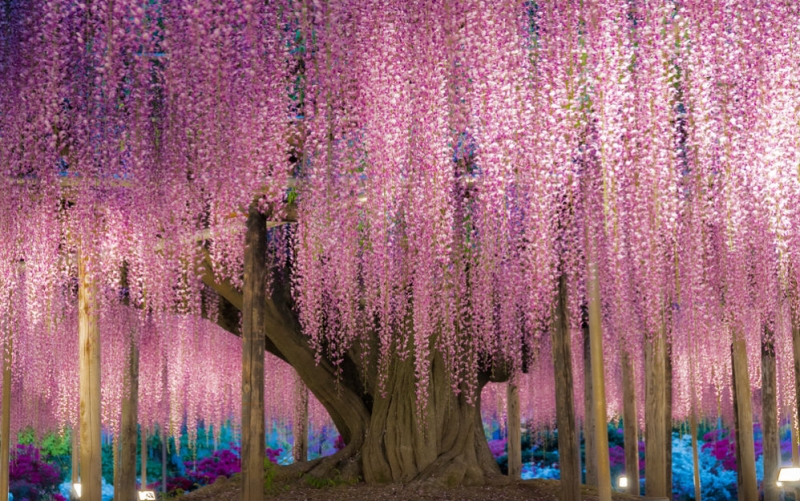
Remember the Eiwa tree of life from the movie “Avatar”? It actually exists and grows in Japan in the Ashikaga Flower Park. Its age is approaching 150 years, and the crown area is almost 2000 square meters of a dense carpet of branches with flower shoots flowing down. Wisteria, or wisteria as it is listed in the International Code of Botanical Nomenclature, is a large woody vine that is very often used in landscape design and ornamental horticulture. The entire lush crown cannot be supported on its trunk alone, so it is supported by steel supports, which, however, do not spoil the fabulous impression at all, but, on the contrary, complement it thanks to the soft lighting. At the end of March, wisteria blooms with a billion tiny purple flowers and fills the air with a sweet scent.
Boxwood
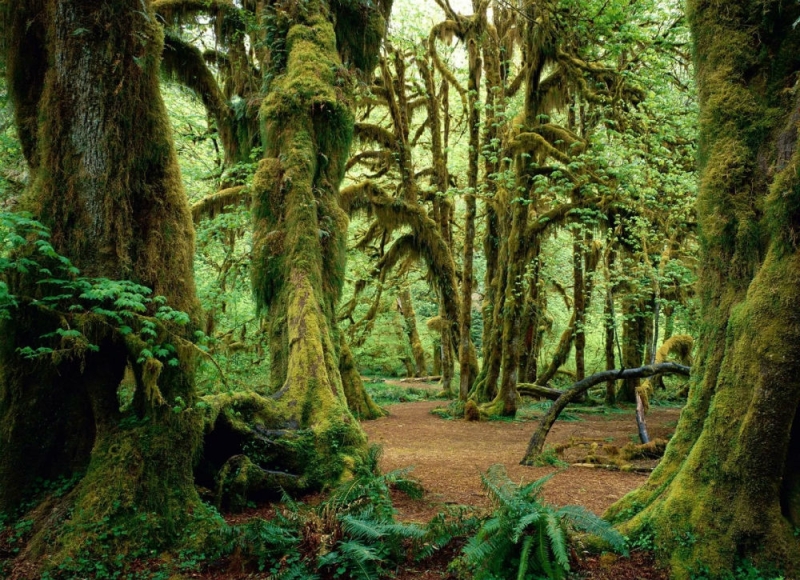
Boxwood is one of the oldest ornamental plants with a thick, lush crown and shiny dark green foliage. The first mentions of it are found in ancient literature, and in Abkhazia there is a saying “Even the boxwood does not remember,” meaning that some events took place a very long time ago. The trees are not very large; boxwoods grow only 12 meters in height, but their branches grow in bizarre curves, intertwining with each other. Boxwood is also called “iron wood”, since its wood is the densest in the world, it does not burn and sinks in water. It is thanks to this property that boxwood groves are transformed after the trees die: the trunks and branches do not dry out or fall for many years, but instead become overgrown with soft green moss. In the Matsesta microdistrict of the city of Sochi and in Abkhazia there are dense shady boxwood groves, walking through which it seems that you can meet a faun or stumble upon the hut of a forest witch.
Rainbow Eucalyptus
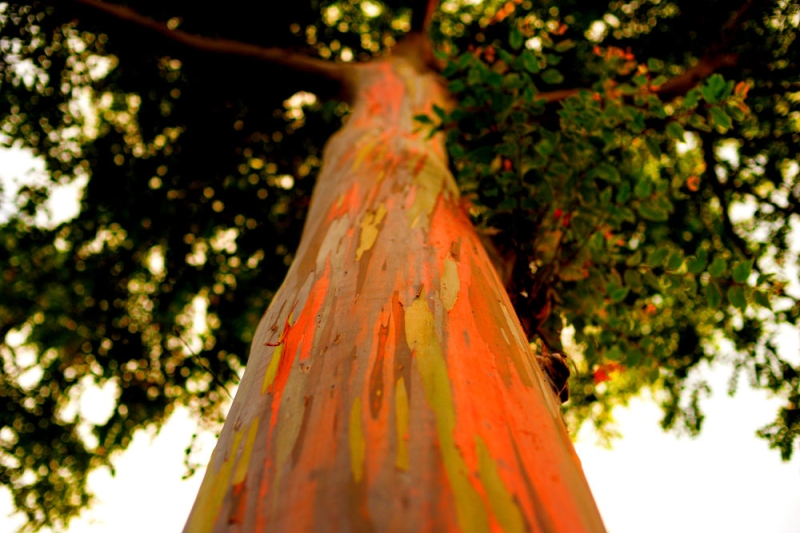
Not only the crowns and flowers are bright and colorful, but also the tree trunks themselves. The rainbow eucalyptus looks as if a mischievous artist took oil paints and painted the trunk red, orange, blue and green with sweeping movements. The thing is that the bark of this tree is constantly renewed. When young, it is bright green, then darkens over time, turning blue, then purple, then turning into a red-orange hue and finally flaking off. The process of changing layers occurs gradually in different parts of the trunk, due to which a colored mosaic is created on its surface. Rainbow eucalyptus grows in moist forests and is especially common in Hawaii. It adorns most botanical gardens in the tropical zone; you can see and touch it in Indonesia, Malaysia and Sri Lanka.
Baobab
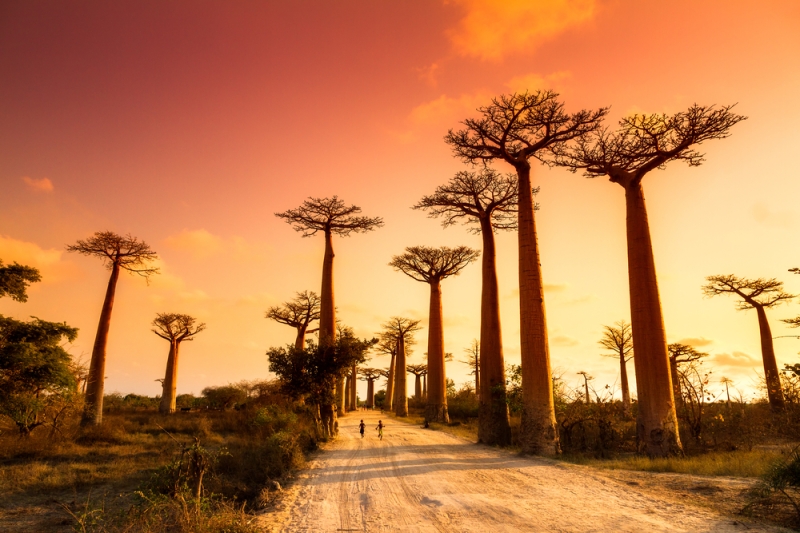
Imagine an African savanna and a few trees on the horizon. The probability that baobabs have appeared in your imagination is almost one hundred percent. A huge massive pillar, the top of which is decorated with a green branched cap, can be called a symbol of Africa, although baobabs also grow on other continents. These trees are considered the thickest in the world – they grow up to 8 meters in diameter; it takes fifteen people to clasp such a trunk holding hands. Such a thick trunk is needed to accumulate moisture and survive the dry season, but due to the high water content, a fungus often grows in it, which eats away inside the hole and hollow. However, the baobab is very tenacious; it continues to bloom and bear fruit, even being completely hollow inside. By the way, people came up with a special use for such trees – in Australia there are two baobab trees, which at the beginning of the 19th century were used as transit prisons; criminals were simply locked inside the tree at night. It is difficult to determine the age of the baobab tree, since its wood does not have growth rings. Cautious estimates by scientists speak of 1000 years, but at the same time, radiocarbon analysis showed that the age of a tree with a diameter of 4.5 meters is more than 4500 years.

